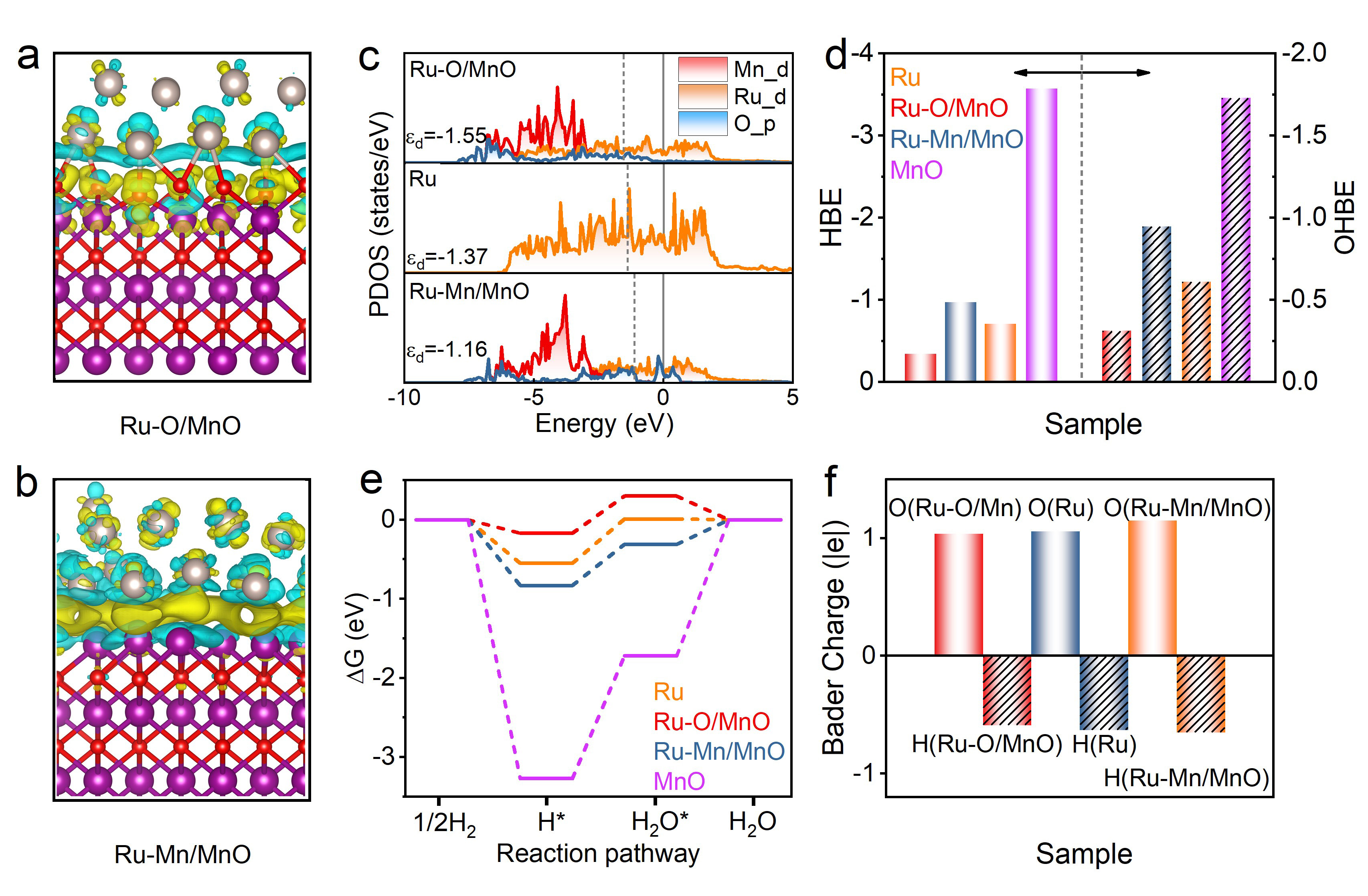
A team of researchers from the High Magnetic Field Laboratory at the Hefei Institutes of Physical Science of the Chinese Academy of Sciences introduces an innovative method to optimize the performance of ruthenium (Ru) catalysts—offering a cost-effective and efficient alternative to platinum (Pt), which is commonly used in hydrogen oxidation reaction (HOR) catalysts but is expensive and scarce.
The study was recently published in Nano Letters.
Ru has emerged as a promising substitute, but under alkaline conditions, its catalytic activity is hindered due to strong adsorption of hydrogen (H*) and hydroxyl (OH*) intermediates, which slows the reaction.
In this research, the researchers—led by Prof. Hui Wang, in collaboration with Prof. Fangcai Zheng of HFIPS and Prof. Qiquan Luo of Anhui University—devised a strategy to fine-tune the local electronic environment of Ru. They embedded the Ru atoms within manganese oxide (MnO) lattices to engineer interfacial Ru–O bonds. These interfacial structures were confirmed using electron spin resonance (ESR) spectroscopy, conducted at the Steady-State High Magnetic Field Experimental Facility.
The formation of Ru–O interfacial bonds led to a downward shift in the d-band center of Ru atoms, effectively balancing the adsorption of reaction intermediates and lowering the energy barrier for water formation. This structural optimization significantly boosted the HOR activity. The catalyst demonstrated a mass activity of 1.26 mA per microgram of Ru in a 0.1 M KOH electrolyte—13 times higher than a benchmark Ru/C catalyst and 8 times higher than commercial Pt/C. It also showed strong durability and resistance to carbon monoxide, a known inhibitor in catalytic systems.
This research presents a novel strategy for improving HOR catalysts by regulating the interfacial electronic structure. It not only sets a new benchmark for Ru-based materials but also deepens the understanding of how magnetic field technologies like ESR can play a role in advanced catalyst design.

Theoretical calculation and modeling of the surface electronic structure of Ru catalysts and their HOR performance. (Image by ZHENG Fangcai)